Best Bait For Brook Trout: 5 Most Effective Baits
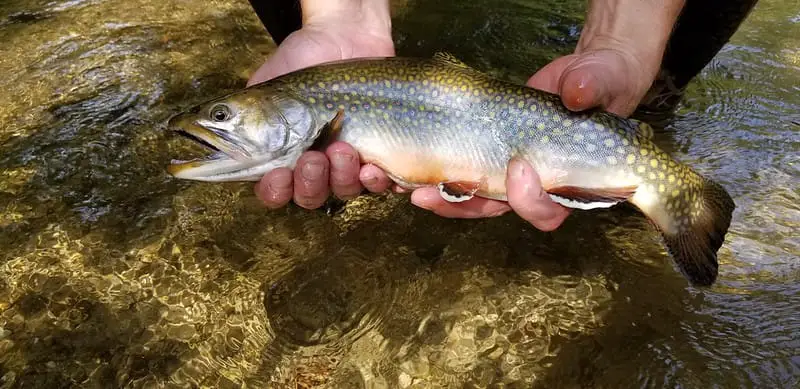
There are two types of baits for brook trout. There are high-percentage baits and low-percentage baits.
Top guides and anglers use high-percentage baits. These baits consistently work, and the trout hold onto them.
Some of these high-percentage baits are worms, salmon eggs, insects, artificial flies, grubs, and minnows. There are a few more, and I will discuss ways to make these baits even more effective.
Low-percentage baits are often recommended by less experienced anglers and bloggers trying to make money selling you crap! I’m just being honest. These low-percentage baits work, but they do so less often, and many fish spit them out quickly.
I’ve tested just about every bait there is for 37 years in all kinds of conditions for both wild and stocked brook trout. As a top trout guide, I need to know the best baits for brook trout and when and how to use them to ensure I provide my clients with the best chance of catching fish.
How To Choose Best Bait For Brook Trout
One of the reasons river guides catch more fish is bait choice. The first thing a guide does before he decides on the best bait is assess the situation or conditions and try to determine what the trout wants.
The guide may consider the time of year, time of day, the activity level of the trout, water temps, and the trout’s prevalent food sources. If the first bait doesn’t work, he will rotate through all his good baits, as well as try various sizes and colors.
Some baits just work better under certain conditions. I wouldn’t put a grasshopper onto my hook in the middle of the winter because the chances are better that a small nymph or a single salmon egg would be a more effective bait at that time.
Making Any Bait More Effective
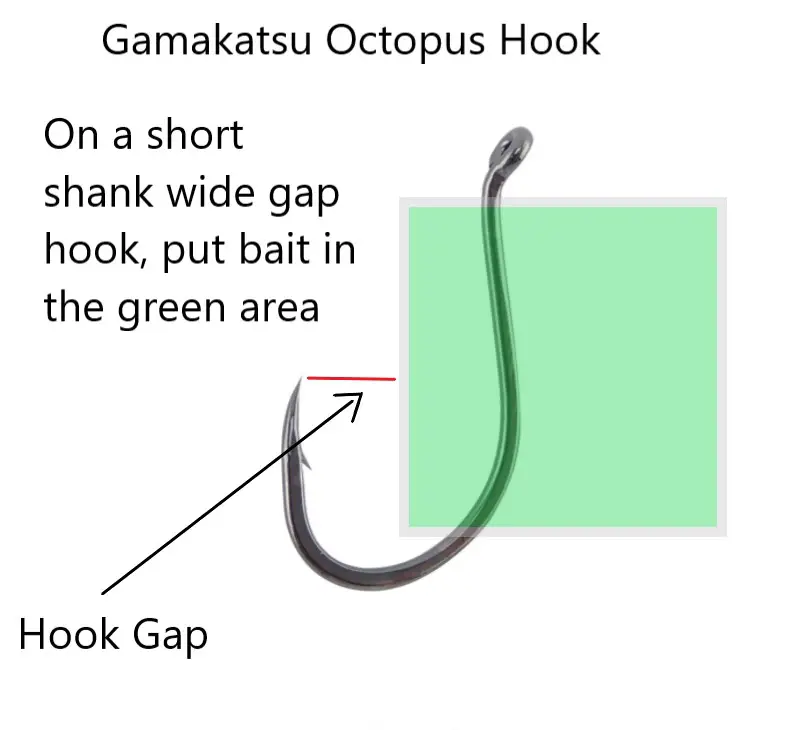
Fishing a bait effectively and with the right setup is the reason a good river guide will catch ten times more trout than other anglers on the same river with the same bait.
This is what you MUST do to catch more fish on any bait.
- Use The Right Hook Type and Size: Use a high-quality hook with a chemically shaped hook point and one proven to hook better and hold better. Make sure your hook also matches your bait size.
- Put The Bait On Properly: Many anglers think they need to cover the entire hook so the trout does not see it. This is wrong, and it will lead to less trout hooked, especially in currents! I have caught tens of thousands of trout with the hook point fully exposed, and so do other top guides.
- Leader and Leader Setup: Critical to catching fish is having the right leader size and setup for the method you want to use. Many anglers struggle to catch fish because the fish see the leader, or their presentation suffers because of a bad leader.
- Presentation: How you present your bait is critical. I know this for a fact because I’ve seen it happen hundreds of times when one angler fishes well and catches ten times more fish than another angler fishing poorly.
You can see all of this and more on my page, Brook Trout Fishing: Top Guide Tips and Tactics.
What Is The Best Brook Trout Bait?
I will have multiple good baits on me, and I will then rotate through the baits, as well as rotate through the bait sizes and colors. Sometimes you will find a good bait right away, other times you will need to try many baits.
Artificial Flies Are Great For Brook Trout
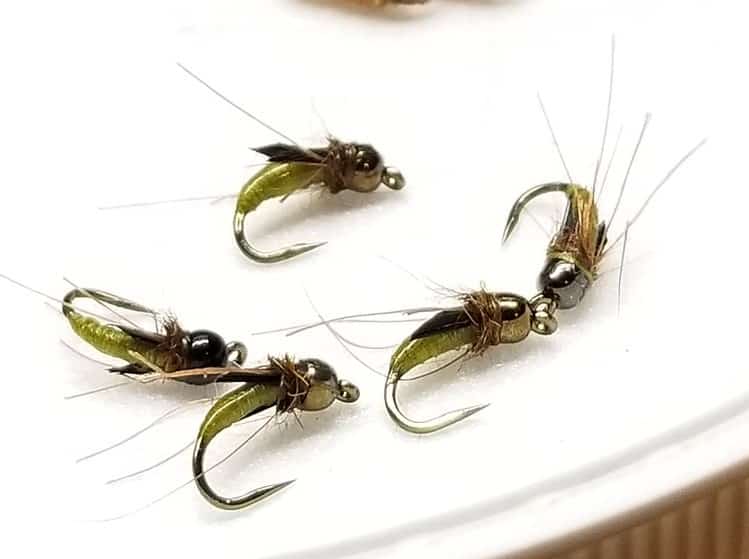
The reason that I think artificial flies like the ones the fly anglers use are so good is that these flies imitate the aquatic insects that are found in the river year-round.
These same aquatic insects are recognized by brook trout as a valuable food source and trout will eat aquatic insects from the time they are born to their final days.
You do not need to be a fly angler to use artificial flies for brook trout since they can be used with both bottom bouncing methods and float fishing.
Flies can also imitate other types of insects that might fall into the river, such as beetles, bees, moths, crickets, grasshoppers, or the many other insects that live near the river.
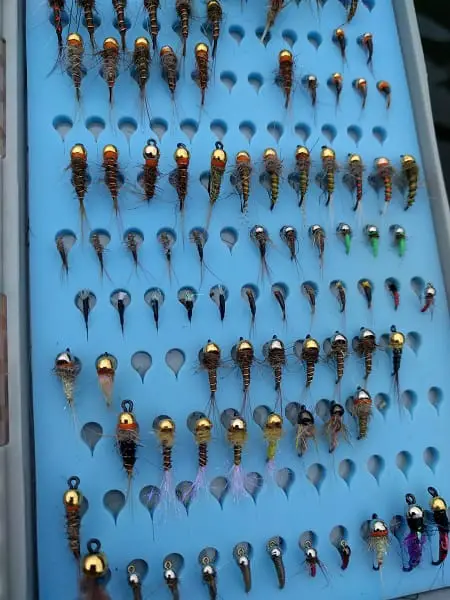
Even in the winter months, some aquatic insects will become dislodged from their rocky home and drift in the current and become food for brook trout.
Stonefly, midges, and Mayfly species, like the tiny Blue Winged Olive are active during the winter and early spring.
In the winter, I will use smaller flies in sizes 16, 18, and 20.
During later spring through the fall, I will use some larger size 6 to 14, but smaller sizes will still work at times.
Best Brook Trout Flies
The Higa’s SOS fly has been a hot fly for me over the last few seasons. I have done very well with this red version but also with a bright green back.
The most effective flies that I use for brook trout are:
Flies like the Pheasant Tail Nymph, Frenchie / Hot Spot Pheasant Tail Jig Fly, and the Davie’s Polish Pheasant Tail Nymph.
Other Great Trout Flies Include:
- Walts Worm and Sexy Walts Worm
- Diamond Dub Scud or the Humps Cress Bug used by guide George Daniel
- Rainbow Warrior
- Prince Nymph
- Lightning Bug Nymph
- Bead Head Black Stonefly
- Tungsten Micro Wooly Bugger – White, Black, and Olive are my most effective colors in sizes 10 and 12.
- Tungsten Jigged Prince Nymph – One of my most effective patterns in the spring and early fall. Size 10 or 12.
- Tungsten Duracell Jig Head Fly
- Tungsten Jigged Caddis
- Tungsten Bead Frenchie Jig Fly
If you are a spin fisherman, check out my page, How To Fish Flies With Spinning Gear: 2 Best Methods
Worms For Brook Trout
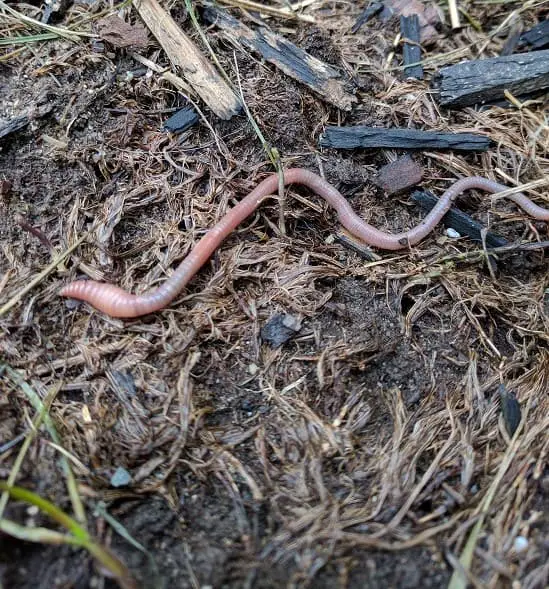
The worm is a great brook trout bait and they are great in the spring. However, it never hurts to fish a worm at any time of the year, even in the middle of the winter.
Small 2- to 4-inch garden or red worms work much better than large 7-inch or bigger dew worms.
Hooking and properly presenting a worm makes a huge difference. You can see how to do this well on my page, Fishing With Worms For Trout and Steelhead: 10 Guide Tips
Another thing you should seriously consider is using plastic worms instead of real worms.
I now fish plastic worms 95 percent of the time, and when fishing in the current I find plastic worms work equally as well for brook trout as live worms do.
Berkley Trout Worms
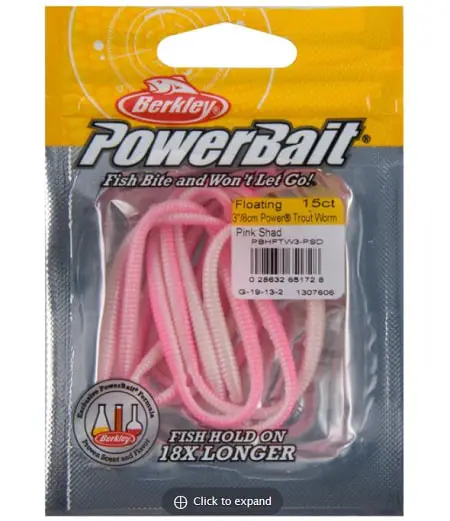
Berkley Gulp Earthworms / Red Wigglers
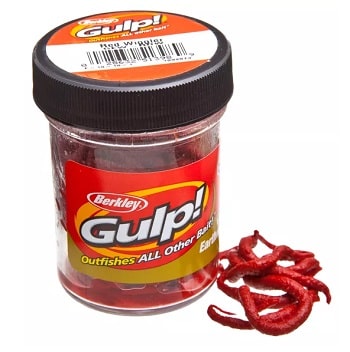
Berkley Gulp! Alive! Angle Worms
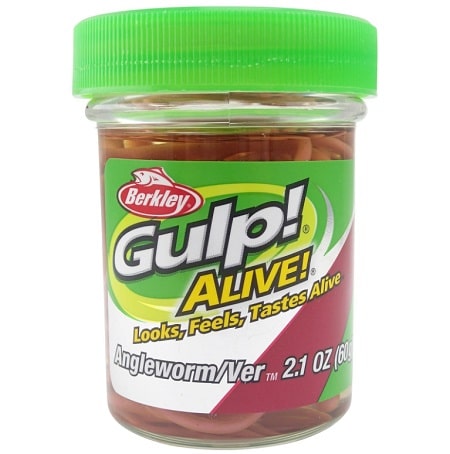
Eggs Are One Of The Best Baits For Brook Trout
Egg baits can be anything from spawn sacs, single salmon eggs, skein, hard and soft beads, or artificial plastic eggs.
Egg baits can be seasonal, and eggs are often best in the fall and spring when there are rainbow trout, other trout, or other fish like suckers spawning in the river.
Fish eggs are often drifting in the current during the spawn and brook trout will gorge on them without hesitation.
Rigging your eggs and knowing the right sizes and colors can pay off with a lot more and bigger brook trout. Spawn Bags – Guide Secrets For More Trout And Steelhead and at Bead Fishing For Trout – Easy Guide Secrets
Grub-type Baits For Brook Trout
Baits like grubs, mealworms, maggots, and wax worms can be excellent baits for brook trout, especially from spring to early fall. You can find them at your local fishing store or at your local pet store since people use them for their pet reptiles.
You could also choose the imitation plastic grubs like the Berkely Power Wigglers, but I would only use these in faster current and as a last resort.
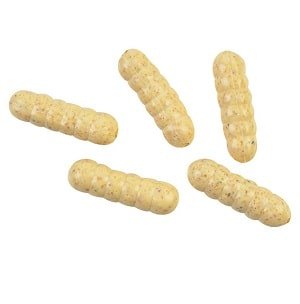
Power Wigglers
Berkley PowerBait Power Wigglers are a great grub/maggot imitation.
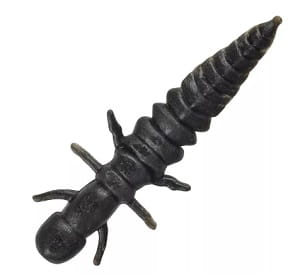
Lil Hellgrammites
Plastic Nymphs like this 2″ Lil Hellgrammites can be good in rivers.
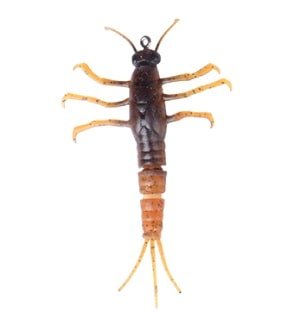
Savage Nymph
This 2-inch Savage Gear plastic nymph is good in rivers.
Leeches And Crawfish Are Good Baits For Brook Trout
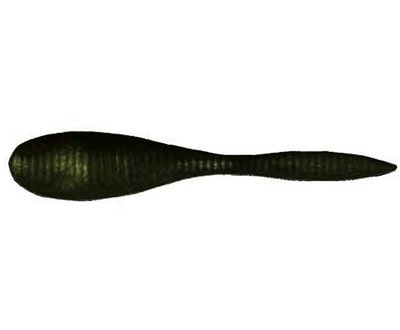
I have seen huge brook trout chasing crayfish in the shallows and near the rocky edges of the river. I have also seen them smash a well-presented live or fake leech, so these types of baits are great for both big and small brook trout.
One of my favorite baits in current is the Berkely Gulp Leech.
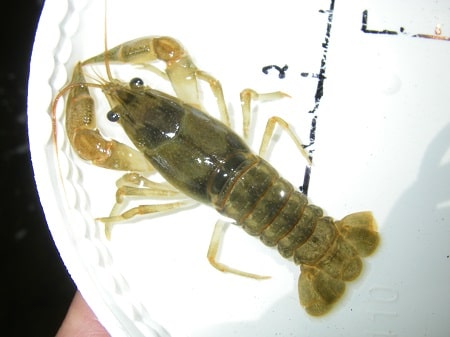
Not sure what hook to use, that’s okay, check out my article, 11 Best Hooks For Trout: What The Guides Use
For leeches, 3 to 4-inch leaches are great for most brook trout.
Minnow And Baitfish For Brook Trout
Minnows and other baitfish are probably the bait that I use the least for brook trout, but only because they are so hard to carry with you and the other baits above are usually more than enough to catch brook trout.
Most of the time, I prefer to use imitation minnows like the Berkley Gulp Alive minnows, especially in rivers. They have a scent that attracts fish, they have good movement in the current, and they hold on to the hook well. They also come in some great colors, and their size is perfect.
Conclusion
Brook Trout guides catch more fish and their formula for catching more brook trout isn’t that hard.
- Know which bait is good at that time.
- Know which method will be the most effective based on the river or spot.
- Put the bait on a great setup.
- Be stealthy.
- Present the bait really well.
Tight Lines,
Graham
